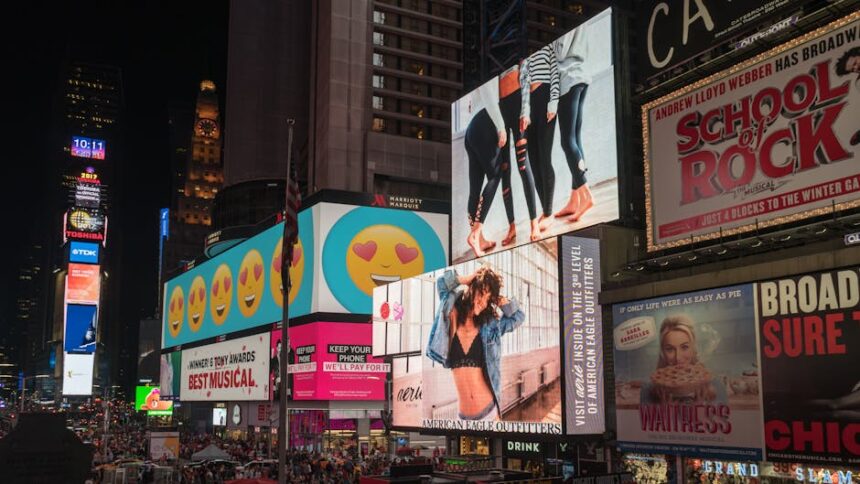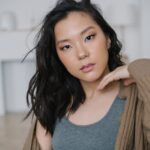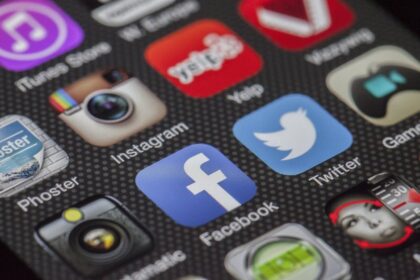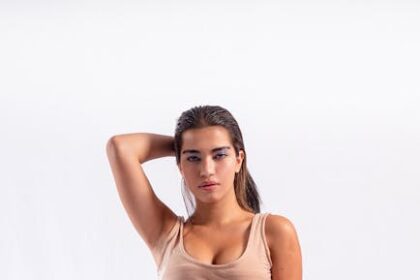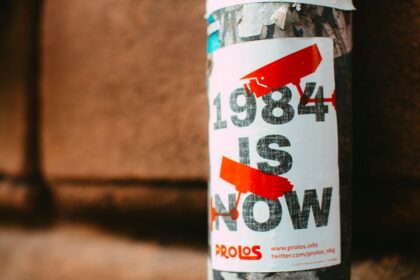Crafting irresistible Twitter ad creatives hinges on a deep understanding of the platform’s unique user behavior and the inherent characteristics that define effective digital advertising. Twitter, at its core, is a real-time, discovery-driven environment where information flows rapidly, and attention spans are notoriously short. Users scroll quickly, seeking immediate value, entertainment, or relevance. For an ad to cut through this constant stream of tweets, it must possess an almost magnetic quality, instantly captivating the user and compelling them to pause, engage, and act. This magnetic quality is precisely what defines an “irresistible” ad creative. It’s a blend of stunning visuals, compelling copy, and a clear, concise call to action, all meticulously designed to resonate with the target audience within the Twitter ecosystem.
The primary reason Twitter ads work is their ability to integrate seamlessly into the user’s feed while simultaneously delivering a targeted message. Unlike other platforms, Twitter fosters a culture of direct interaction and engagement, making it fertile ground for brands that can craft creatives that feel less like traditional advertisements and more like valuable content. High engagement rates, direct user interaction, and robust interest-based targeting capabilities further amplify the potential of well-designed Twitter ad creatives. Furthermore, Twitter’s mobile-first user base means that every creative decision, from image aspect ratios to video length and text readability, must be optimized for small screens, ensuring clarity and impact even on the go.
The Foundational Principles of Irresistible Twitter Ad Creatives
At the heart of any successful Twitter ad campaign are several foundational principles that guide the creation of truly irresistible content. These aren’t mere suggestions but rather critical pillars upon which high-performing creatives are built.
Firstly, Relevance is paramount. An ad that isn’t relevant to its audience will be scrolled past instantly. This means tailoring content, visuals, and messaging to specific audience segments based on their interests, demographics, behaviors, and even their current real-time context. A highly relevant ad feels less like an interruption and more like a welcome piece of information or entertainment. It speaks directly to the user’s needs, desires, or pain points.
Secondly, Conciseness is non-negotiable. Twitter’s character limits for tweets, headlines, and descriptions force advertisers to be incredibly disciplined with their words. Users are consuming content at a high velocity, so messages must be delivered quickly and impactfully. Every word must earn its place, and visuals must convey significant meaning without needing extensive textual explanation. Brevity isn’t just about fitting within a character count; it’s about respecting the user’s time and attention span.
Thirdly, Visual Impact cannot be overstated. Twitter is an incredibly visual platform, and high-quality images and videos are the primary scroll-stoppers. A striking visual can communicate a brand’s message, evoke emotion, and capture attention far more effectively than text alone. From professional product photography to engaging video animations, the visual component of a Twitter ad creative is often the first, and sometimes only, impression a user gets. It must be compelling enough to halt the scroll and entice further engagement.
Fourthly, a Clear Call to Action (CTA) is essential. Once a user’s attention has been captured, they need to know what to do next. An irresistible ad creative guides the user seamlessly from interest to action. Whether it’s “Shop Now,” “Learn More,” “Sign Up,” or “Download,” the CTA must be prominent, unambiguous, and directly linked to the campaign’s objective. Ambiguity in a CTA leads to confusion, frustration, and ultimately, lost conversions.
Fifthly, Authenticity and Brand Voice are crucial for building trust and connection on Twitter. Users can quickly detect overly salesy or inauthentic messaging. Irresistible creatives speak in a genuine voice, reflecting the brand’s personality and values. They often adopt a conversational tone, engaging with users rather than simply broadcasting at them. This authenticity can manifest in using user-generated content, behind-the-scenes glimpses, or humor that aligns with the brand’s persona.
Finally, Timeliness and Context play a significant role. Twitter thrives on real-time events, trending topics, and current affairs. Leveraging these ephemeral moments can make an ad creative feel incredibly relevant and immediate. This might involve newsjacking, integrating with live events, or simply ensuring that ad creatives reflect current seasons, holidays, or cultural moments. The most irresistible ads often feel like they belong in the current moment, not just a pre-scheduled marketing push.
Mastering Twitter Ad Copywriting: The Art of Brevity and Impact
Copywriting for Twitter ads is a nuanced art form that demands precision, creativity, and a deep understanding of human psychology within a constrained environment. The character limits are not merely a technical hurdle but an invitation to distill your message to its most potent form.
The Hook: Grabbing Attention in the First Few Words
On Twitter, the first few words of your ad copy are critical. They determine whether a user continues reading or scrolls past. This is your “hook.”
- Problem/Solution Framework: Start by explicitly stating a problem your target audience faces, then immediately offer your product/service as the solution. Example: “Tired of dull commutes? 🚗💨 Our new podcast makes every journey enjoyable!”
- Intrigue: Pose a question or make a statement that piques curiosity, compelling users to read on. Example: “What if your morning coffee could do more than just wake you up? 👇”
- Direct Benefit: Immediately articulate the core benefit the user will gain. Example: “Unlock financial freedom with smart investing. Learn how in minutes!”
- Urgency/Scarcity: Imply a limited-time opportunity. Example: “Last chance to save 50%! Sale ends tonight! Don’t miss out.”
Benefit-Driven Language: Features vs. Benefits
A common mistake in ad copy is focusing on features rather than benefits. Features describe what your product is or does. Benefits describe what your product does for the user. Irresistible copy always emphasizes the latter.
- Feature: “Our smartphone has a 108MP camera.”
- Benefit: “Capture breathtaking, professional-quality photos with every snap, no special skills required!”
Focus on how your product solves problems, saves time, improves life, or provides pleasure. Use vivid, emotive language.
Crafting Compelling Headlines and Descriptions (for Website/App Cards)
While the main tweet copy has its own constraints, Twitter’s Website and App Card formats offer additional fields for headlines and descriptions, providing valuable real estate for persuasion.
- Headlines (up to 70 characters): These are prime territory for conveying your unique selling proposition (USP) or the most compelling benefit. They must be punchy, keyword-rich (for SEO benefits beyond Twitter), and highly relevant to the linked content. Example: “Boost Your Productivity Instantly” or “Eco-Friendly Fashion for All.”
- Descriptions (up to 200 characters, often truncated): Use this space to elaborate slightly on the headline, adding more context or reinforcing the benefit. It’s an opportunity to provide a little more detail before the user clicks through. Keep it concise, actionable, and aligned with the headline’s promise.
- Keywords and SEO: While Twitter’s internal search isn’t as robust as Google, incorporating relevant keywords naturally into your headlines and descriptions can improve discoverability and signal relevance to algorithms and users alike.
Strategic Use of Emojis
Emojis, when used judiciously, can enhance readability, convey emotion, and add a playful or serious tone depending on your brand voice.
- Visual Breaks: They break up blocks of text, making the copy easier to scan.
- Emotional Resonance: Emojis can quickly communicate feelings (e.g., excitement 🎉, concern 😟, triumph 💪).
- Space Savers: Sometimes an emoji can replace a word or phrase, saving valuable characters.
- Brand Personality: Consistent use of certain emojis can reinforce brand identity.
- Caution: Don’t overuse them. Too many emojis can make an ad look cluttered or unprofessional. Ensure they are relevant to your message and target audience.
Hashtag Mastery
Hashtags are fundamental to Twitter’s discoverability. Strategic hashtag use in ad creatives can expand reach and target specific conversations.
- Branded Hashtags: Create and consistently use hashtags unique to your brand or campaign (e.g., #YourBrandName, #SummerSale2024). These build brand recognition and can serve as a hub for user-generated content.
- Trending Hashtags: Leverage trending topics to increase visibility. However, use with extreme caution. Ensure the trend is genuinely relevant and aligns with your brand’s message and values. Misusing a trending hashtag can lead to backlash.
- Discovery Hashtags: Use broad, relevant hashtags that your target audience might be following or searching for (e.g., #DigitalMarketing, #FitnessTips, #TravelDeals).
- Optimal Number of Hashtags: Generally, 1-3 highly relevant hashtags are ideal for promoted tweets. Too many can look spammy and dilute your message. The goal is quality over quantity.
Leveraging Mentions (@)
Mentioning other Twitter accounts (@usernames) in your ad copy can extend your reach and add credibility.
- Influencers: If you’re running a campaign with an influencer, mentioning their handle can tap into their audience and leverage their credibility.
- Partnerships: Mentioning collaborators, sponsors, or complementary businesses can create cross-promotional opportunities.
- Community Engagement: Prompting users to tag friends or mention your brand can boost engagement and visibility. Example: “Tag a friend who needs this! 👇 @YourBrandName.”
Infusing Urgency and Scarcity
These psychological triggers are powerful motivators for immediate action.
- Time-Sensitive Offers: “Offer ends in 24 hours!” “Limited time only!”
- Limited Stock: “Only 5 left!” “While supplies last!”
- Event Deadlines: “Register by Friday!” “Don’t miss our webinar.”
Use strong action verbs and clear deadlines to create a fear of missing out (FOMO).
Defining Your Brand Voice
Your brand voice is the personality you convey in your copy. Consistency is key across all creatives.
- Conversational: Friendly, approachable, like talking to a friend.
- Authoritative: Expert, knowledgeable, trustworthy.
- Humorous: Witty, light-hearted, entertaining.
- Empathetic: Understanding, supportive, compassionate.
Choose a voice that resonates with your target audience and authentically represents your brand.
A/B Testing Copy Variations
Never assume what copy will perform best. A/B test everything:
- Headlines: Different angles, benefits, or CTAs.
- Body Copy: Short vs. long, different hooks, emotional appeals.
- CTAs: “Learn More” vs. “Shop Now” vs. “Get Started.”
Track key metrics like click-through rate (CTR), engagement rate, and conversion rate to identify winning copy elements. Iterative testing is crucial for continuous improvement.
Handling Character Limits Effectively
Twitter’s primary tweet character limit (280 characters for most users, potentially more for specific formats) means every character counts.
- Prioritize Information: Lead with the most important message.
- Use Shortened URLs: Twitter automatically shortens links, but if you’re using a custom shortener, ensure it fits.
- Leverage Visuals: Let images or videos tell part of the story, reducing the need for lengthy text descriptions.
- Focus on Action: Use strong verbs and avoid unnecessary filler words.
- Think Like a Journalist: Who, what, when, where, why – get to the point quickly.
Visual Storytelling: The Dominance of Images and Videos
In the fast-paced, visually driven environment of Twitter, high-quality images and compelling videos are not just supplementary elements; they are often the primary drivers of engagement and conversion. The right visual can instantly communicate a complex idea, evoke emotion, or capture attention where text alone might fail.
The Primacy of Visuals on Twitter:
Twitter users scroll rapidly, and visuals are the most effective way to “stop the scroll.” An eye-catching image or a dynamic video snippet can break through the noise of the timeline, making a user pause and engage with your ad. This initial pause is critical – it’s your opportunity to deliver your message. Visuals also tend to be more memorable and shareable, extending the organic reach of your ad creative.
High-Quality Image Creatives:
Images on Twitter must be impeccable in quality and strategic in their execution.
- Resolution, Clarity, Professionalism: Pixelated, blurry, or amateurish images instantly undermine credibility. Invest in high-resolution, professionally shot images that showcase your product or brand in the best possible light. This often means hiring a photographer or videographer, or investing in premium stock photography licenses.
- Brand Consistency: Your images should align with your brand’s visual identity. Use consistent color palettes, fonts (if text is embedded), and logos. This builds brand recognition and reinforces your overall marketing message across channels.
- Product in Context: Showing, Not Just Telling: Instead of a static product shot, show your product being used in a real-world scenario. For a travel app, show people enjoying a trip. For a fitness product, show someone actively working out. This helps users visualize themselves using your product and understand its benefits.
- Lifestyle Imagery: These images connect your product or service with a desirable lifestyle or emotion. They often feature models, aspirational settings, and evoke feelings like joy, comfort, or success.
- Infographics for Complex Data: If your ad needs to convey statistics, comparisons, or multi-step processes, a well-designed infographic can be far more effective than dense text. Ensure infographics are readable on mobile, with clear, concise text and prominent visuals.
- Behind-the-Scenes & User-Generated Content (UGC): Authenticity resonates powerfully on Twitter. Behind-the-scenes photos (e.g., your team at work, the making of a product) or user-generated content (photos/videos from satisfied customers) can build trust and community. UGC, in particular, acts as powerful social proof.
- Twitter Image Specifications: Adhere to Twitter’s recommended image dimensions to ensure your creatives display correctly and avoid awkward cropping.
- Single Image Ad: 1:1 (square, e.g., 1200x1200px) or 16:9 (landscape, e.g., 1200x675px) are common. Avoid overly tall images as they take up too much vertical space without adding value. Max file size typically 5MB.
- Image Carousel Ads: Up to 6 images, each with its own headline and link. Recommended aspect ratio is 1.91:1 to 1:1. These are excellent for showcasing multiple products, features, or steps in a process. Ensure consistency in styling across all carousel images.
Compelling Video Creatives:
Video is increasingly dominant on Twitter, offering dynamic storytelling opportunities. Given Twitter’s autoplay feature (sound off by default), your videos must be captivating without audio first.
- The Autoplay Imperative: Design your video to capture attention visually in the first few seconds, even without sound. Use strong visual hooks, motion, and clear text overlays. Many users browse with sound off, so your core message must be conveyed through visuals and captions.
- Optimal Video Lengths: While Twitter allows longer videos, the sweet spot for ad creatives is typically short and punchy, around 6-15 seconds. Shorter videos have higher completion rates and can deliver a concise message effectively. Longer videos (e.g., 30-60 seconds) can be used for tutorials or deeper dives but require even more compelling content to maintain engagement.
- The First 3 Seconds: These are the most critical. Your video must immediately convey value, intrigue, or a clear purpose. If a user isn’t hooked within the first few seconds, they will scroll past. Consider starting with a strong visual, a clear problem statement, or an immediate reveal of a benefit.
- Vertical Video Optimization: A significant portion of Twitter usage is on mobile devices held vertically. Optimizing your videos for vertical viewing (e.g., 9:16 aspect ratio) can provide a more immersive and native experience, filling the entire screen and reducing the need for users to rotate their devices.
- Storytelling Through Video: Video is a powerful medium for narrative.
- Problem-Solution: Show a user struggling, then introduce your product as the seamless solution.
- Emotional Appeals: Create videos that evoke joy, relief, excitement, or aspiration.
- Mini-Documentaries: Short, compelling stories about your brand’s mission or customer success.
- Before & After: Visually demonstrate the transformative impact of your product or service.
- Animated Graphics and GIFs: These can add dynamism and visual interest, especially for explaining abstract concepts or highlighting quick features. GIFs are often used for lighthearted, engaging content and can loop endlessly, repeating a message.
- Demonstrations and Tutorials: Show, don’t just tell. A brief video demonstrating how to use your product or service can be incredibly effective for driving understanding and adoption.
- Testimonials and Social Proof Videos: Short video clips of satisfied customers sharing their positive experiences build immense trust and credibility.
- Live Video Promotion: If you’re hosting a live Twitter Space or event, a short video creative promoting it can drive tune-in.
- Twitter Amplify and Premium Content: For brands looking for premium placement, Twitter Amplify allows ads to run before, during, or after content from premium publishers. This requires high-quality, brand-safe video creatives that align with the publisher’s content.
- Video Specifications:
- Recommended Aspect Ratios: 1:1 (square, popular and effective for mobile), 16:9 (landscape), 9:16 (vertical).
- Resolution: 1280×720 (landscape), 720×1280 (portrait), 720×720 (square). Higher resolutions are preferred for clarity.
- File Types: MP4, MOV.
- Max File Size: 1GB (though smaller is better for faster loading).
- Recommended Encoding: H.264 (high profile), progressive scan.
- Bitrate: Minimum 5,000k bps (for 720p).
- Frame Rate: 30 or 60 FPS.
- Call to Action Overlays in Video: Consider embedding your CTA directly into the video creative, especially in the final seconds, alongside the clickable CTA button. This reinforces the desired action.
Strategic Call to Action (CTA) Implementation
The Call to Action (CTA) is the bridge between user interest and conversion. An irresistible ad creative must have a CTA that is not only present but also highly effective in guiding the user towards the desired next step.
Clarity and Specificity:
Avoid vague or generic CTAs. Instead of “Click Here,” be specific about what the user will gain or do. “Shop Now,” “Learn More,” “Sign Up,” “Download App,” “Get Quote,” “Book Now,” “Donate” – these are clear, actionable commands. The CTA should directly align with the immediate goal of the ad (e.g., if you’re trying to drive purchases, “Shop Now” is better than “Learn More”).
Placement and Prominence:
The CTA needs to be easily identifiable and accessible. Twitter’s ad formats typically include dedicated CTA buttons, which are excellent for visibility. However, also reinforce the CTA within your copy and, if applicable, your visual creative (e.g., text overlay in a video, text on an image). Ensure it stands out visually through contrasting colors or strategic placement.
Testing CTA Button Texts:
Like other creative elements, CTAs benefit greatly from A/B testing. Small changes in wording can lead to significant differences in click-through rates. Test different verbs, add urgency, or highlight a specific benefit. For example, “Download Free Ebook” might outperform “Download Now” if the user perceives the value more explicitly.
Matching CTA to Campaign Goal:
Your CTA must directly reflect your campaign’s objective.
- Awareness: “Learn More,” “Watch Video”
- Consideration: “Download Guide,” “Sign Up for Webinar”
- Conversion: “Shop Now,” “Get a Quote,” “Book Appointment”
- App Installs: “Install Now,” “Play Game”
Mismatching the CTA with the user’s journey stage can lead to high clicks but low conversions. An ad optimized for awareness (e.g., “Learn More”) might get clicks from people not ready to buy, leading to wasted spend if the goal was sales.
Urgency within CTAs:
Infusing urgency can motivate immediate action. Combine your clear CTA with time-sensitive language. “Shop Now – Limited Stock!” or “Sign Up Today for 20% Off!” This encourages users to act before the opportunity passes.
Exploring Twitter Ad Formats and Tailoring Creatives
Twitter offers a diverse array of ad formats, each with unique creative implications and best practices. Understanding how to tailor your visuals and copy for each format is key to maximizing campaign performance.
Promoted Tweets:
These are the most common and versatile ad format, appearing directly in users’ timelines. They look like organic tweets but are labeled “Promoted.”
- Creative Implication: Leverage the standard tweet’s full potential: 280 characters for compelling copy, vibrant single images or short videos, and up to 4 images in a carousel. Use strong questions or statements to grab attention immediately. Emojis and hashtags are particularly effective here.
- Best Practice: Keep the message concise and impactful. The first few words are paramount as they are visible even if the tweet is partially off-screen.
Image Ads & Video Ads:
These are essentially Promoted Tweets but with a primary focus on a single static image or video, respectively.
- Image Ads: The image carries the weight of the message. Ensure it’s high-resolution, visually striking, and directly relevant to the copy and CTA. Consider lifestyle images or product-in-context shots.
- Video Ads: The video needs to be a mini-masterpiece. Prioritize the first 3 seconds, ensure it works without sound, and include a clear, concise message. Vertical video is often preferred for mobile immersion.
Website Card Ads:
Designed specifically to drive traffic to a website, these ads combine an image or video with a headline, website URL, and a prominent CTA button.
- Creative Implication: The image/video should be enticing and visually represent your landing page’s content or offer. The headline (up to 70 chars) must be click-worthy and summarize the benefit of clicking. The description (up to 200 chars) provides additional context.
- Optimization: A/B test different headlines and images. Ensure the landing page experience is seamless and consistent with the ad’s promise. High-quality imagery is crucial here as it directly influences CTR.
App Card Ads:
Similar to Website Cards, but specifically designed to drive app installs or engagement. They feature an app icon, rating, price (if applicable), and CTA buttons like “Install” or “Open.”
- Creative Implication: The visual (image or video) should showcase the app’s interface, key features, or the benefits of using it. Short video demos of the app in action perform exceptionally well. The headline and description should highlight the app’s unique selling points and value proposition.
- Optimization: Use compelling screenshots or short video clips that highlight the app’s most engaging aspects. Clearly state the value the user will get from downloading.
Lead Generation Cards:
These allow users to submit their information (name, email) directly within Twitter, reducing friction.
- Creative Implication: The “offer” is central. The ad creative (image/video + copy) must clearly articulate the value exchange for the user’s information. What free resource, discount, or exclusive access are they getting? The copy should emphasize the benefit and ease of signing up.
- Optimization: Craft a highly compelling offer. Use high-quality visuals related to the lead magnet. Ensure the form fields are minimal to reduce abandonment.
Polls:
Twitter Polls allow advertisers to ask a question with up to four answer choices. While not directly driving off-platform action, they are excellent for engagement and audience insights.
- Creative Implication: The question must be engaging and relevant to your audience. The answer choices should be clear and distinct. Use a compelling image or video background for the poll tweet itself to attract attention.
- Optimization: Use polls to gather feedback, conduct market research, or simply create interactive, fun content that boosts brand awareness and engagement.
Promoted Accounts:
These ads aim to gain new followers for your Twitter account, appearing in users’ timelines and in “Who to Follow” suggestions.
- Creative Implication: The ad creative primarily consists of your profile picture, banner image, and a short bio. Ensure your profile visuals are professional and align with your brand. The copy should give users a strong reason to follow you (e.g., “Follow for daily tips,” “Get exclusive updates”).
- Optimization: Highlight the value of following your account. Use keywords in your bio that describe your niche.
Tweet Engagements:
This campaign objective focuses on maximizing likes, retweets, and replies.
- Creative Implication: Design tweets that are inherently shareable and discussion-worthy. Ask open-ended questions, post thought-provoking content, run contests, or share inspiring visuals.
- Optimization: Encourage interaction. Replies often signal deeper engagement and can open direct conversations.
Branded Emojis & Hashtags:
These are high-level, premium branding tools, typically reserved for large campaigns. A branded emoji appears automatically when users tweet a specific hashtag.
- Creative Implication: Requires a strong, memorable campaign hashtag and an engaging, recognizable custom emoji. The accompanying ad creatives promoting the hashtag must be highly creative and inspire widespread adoption.
- Optimization: Used for major product launches, events, or brand awareness campaigns, driving significant buzz and unique brand visibility.
Advanced Creative Optimization and Strategic Approaches
Beyond the fundamental principles and format-specific considerations, advanced strategies can elevate Twitter ad creatives from good to truly irresistible, driving superior results and deeper audience connections.
Audience-Centric Personalization:
The ability to segment audiences is a powerful tool, but its full potential is realized when creatives are tailored to these segments.
- Demographics, Interests, Behaviors: Craft distinct messages and visual styles for different age groups, geographic locations, interests (e.g., tech, fashion, sports), or online behaviors (e.g., frequent travelers, online shoppers). A 25-year-old male interested in gaming will respond to a different creative than a 55-year-old female interested in gardening.
- Custom Audiences: Utilize Twitter’s custom audiences (e.g., website visitors, customer lists) to create highly personalized creatives. For website visitors who viewed a specific product, your ad can show that exact product with a tailored discount.
- Dynamic Creative Optimization (DCO): For larger advertisers, DCO tools can automatically generate multiple variations of ads (mixing different headlines, images, CTAs, product feeds) and serve the best-performing combination to each user based on their profile and real-time interactions. This ensures maximum relevance at scale.
A/B Testing Beyond Basics:
While mentioned for copy, A/B testing applies to every single element of your creative.
- Multivariate Testing: Test multiple elements simultaneously (e.g., 3 headlines, 2 images, 2 CTAs) to understand which combinations perform best.
- Dedicated Testing Cycles: Don’t just set and forget. Allocate specific budget and time for continuous testing. Run tests for a sufficient duration to achieve statistical significance.
- Analyze Granular Metrics: Look beyond just CTR. Analyze engagement rate, video completion rate, conversion rate, cost per conversion, and even replies/mentions. A low CTR might be acceptable if the conversion rate from those clicks is exceptionally high.
- Iterative Improvement: Use insights from testing to inform future creative development. What visual styles resonate most? What emotional appeals drive the most conversions? Build a library of “winning” creative elements.
Real-time Marketing and Trend Leveraging:
Twitter is inherently real-time. Capitalizing on current events, trending topics, and cultural moments can make your ads incredibly relevant and timely.
- Newsjacking: Inject your brand or product into ongoing news cycles or trending conversations. This requires speed and careful consideration to ensure your message is appropriate and adds value to the conversation.
- Cultural Moments: Leverage major sporting events, awards shows, holidays, or seasonal shifts. Craft creatives that align with the sentiment and themes of these moments.
- Event-Driven Creatives: If there’s a major industry conference, festival, or local event relevant to your audience, create ads that directly reference it. Use event-specific hashtags.
User-Generated Content (UGC) Integration:
UGC is one of the most powerful forms of social proof. It’s authentic, trustworthy, and often more relatable than professionally produced content.
- Campaign Ideas: Run contests encouraging users to share photos/videos with your product.
- Showcasing Testimonials: Feature authentic customer reviews or unboxing videos directly in your ads.
- Rights Management: Always ensure you have explicit permission to use a user’s content in your paid advertising.
Retargeting Creative Specificity:
For users who have already engaged with your brand (visited your website, watched a video, added to cart), your ad creatives should be highly specific to their journey stage.
- Awareness Stage (New Audience): Focus on broad benefits, brand introduction, and emotional appeal.
- Consideration Stage (Website Visitors): Offer more detailed information, free guides, webinars, or case studies.
- Conversion Stage (Cart Abandoners): Use urgency (“Your cart is waiting!”), specific product reminders, or exclusive discounts to encourage completion of purchase.
- Loyalty Stage (Existing Customers): Promote new products, loyalty programs, or request reviews.
The creative should acknowledge their previous interaction and provide the next logical step.
Seasonal and Holiday Creative Planning:
Major holidays and seasons present significant opportunities for themed ad creatives.
- Pre-planning: Start designing and scheduling holiday-specific ads well in advance.
- Thematic Variations: Adapt your visuals and copy to align with the holiday spirit (e.g., festive colors for Christmas, sun-drenched imagery for summer, spooky themes for Halloween).
- Promotions: Pair holiday-themed creatives with special promotions, sales, or bundles relevant to the season.
Accessibility in Creative Design:
Designing for accessibility ensures your message reaches a broader audience, including those with disabilities.
- Alt Text for Images: Provide descriptive alt text for all images in your ads. Screen readers use this to describe the image to visually impaired users. Be descriptive but concise.
- Closed Captions for Videos: Always include accurate closed captions or subtitles for all video ads. This benefits hearing-impaired users and those watching without sound.
- High Contrast Text: Ensure text overlays on images or videos have sufficient contrast with the background to be easily readable. Avoid low-contrast color combinations.
- Simple Language: Use clear, straightforward language in your copy. Avoid overly complex jargon where possible.
Brand Consistency Across Digital Touchpoints:
While optimizing for Twitter’s unique environment, your ad creatives should still maintain a unified brand voice and visual identity that aligns with your presence on your website, other social media platforms, and offline marketing. This reinforces brand recognition and builds a cohesive customer journey. Consistent branding builds trust and makes your brand instantly recognizable to your target audience.
Common Creative Pitfalls and Best Practice Safeguards
Even with the best intentions, it’s easy to fall into common creative traps that can undermine the effectiveness of your Twitter ad campaigns. Being aware of these pitfalls and implementing safeguards can prevent costly mistakes and ensure your ad spend is optimized for maximum impact.
Ignoring Mobile-First Design:
- Pitfall: Designing creatives primarily for desktop viewing without considering how they will appear and function on smaller mobile screens. This leads to illegible text, cropped images, poorly framed videos, and frustrating user experiences.
- Safeguard: Always preview your ad creatives on a mobile device before launching. Design with a mobile-first mindset:
- Use clear, large fonts.
- Ensure visuals are impactful even when small.
- Optimize videos for vertical viewing (9:16 aspect ratio) or at least square (1:1).
- Keep text concise and scannable.
- Ensure CTAs are easily tappable.
Over-Promotional or “Salesy” Language:
- Pitfall: Adopting a heavy-handed, aggressive sales tone that screams “I’m an ad!” Users on Twitter are often looking for information, entertainment, or connection, not a hard sell. This type of language can quickly lead to ad fatigue and negative sentiment.
- Safeguard: Embrace a more conversational, authentic, and value-driven tone. Focus on the benefits to the user, tell a story, or provide useful information. Integrate your brand voice to make the ad feel more natural and less like an interruption. Think about how you’d genuinely talk to someone about your product, rather than how a billboard might.
Low-Quality Visuals:
- Pitfall: Using pixelated images, blurry videos, poorly lit photos, or amateurish graphic design. Low-quality visuals instantly signal a lack of professionalism and can damage brand perception, regardless of how good your product is.
- Safeguard: Invest in high-resolution, professional-grade images and videos. Ensure good lighting, clear focus, and consistent brand aesthetics. If budget is tight, utilize reputable stock photo/video libraries that offer high-quality content, and customize them to fit your brand. Consider using design tools like Canva or hiring a freelance graphic designer.
Vague or Missing CTAs:
- Pitfall: Assuming users will know what to do next, or using generic CTAs like “Click Here.” An ad without a clear direction leaves users confused and leads to missed conversion opportunities.
- Safeguard: Every ad creative must have a prominent, clear, and specific Call to Action. Make it obvious what the next step is (“Shop Now,” “Learn More,” “Sign Up,” “Download”). Ensure the CTA button text is specific and compelling, and consider reinforcing it within the ad copy.
Inconsistent Branding:
- Pitfall: Using different logos, color schemes, fonts, or brand voices across various ad creatives or digital platforms. This creates a disjointed experience and makes it difficult for users to recognize and trust your brand.
- Safeguard: Develop and strictly adhere to brand guidelines. Ensure all ad creatives use consistent brand assets (logo, colors, fonts) and maintain a uniform brand voice. This consistency reinforces brand identity and builds familiarity with your audience.
Lack of Testing and Iteration:
- Pitfall: Creating a single ad creative and running it indefinitely without testing different variations or analyzing performance data. This leaves significant opportunities for optimization on the table and can lead to diminishing returns as audiences experience ad fatigue.
- Safeguard: Implement a rigorous A/B testing strategy for all creative elements (copy, visuals, CTAs, headlines). Continuously monitor key metrics (CTR, engagement, conversion rate) and use these insights to iterate and improve your creatives. Set up a testing hypothesis and run tests for sufficient time to gather statistically significant data.
Ignoring Negative Feedback:
- Pitfall: Dismissing or ignoring negative comments, replies, or reports on your ad creatives. This can escalate dissatisfaction and damage your brand’s reputation.
- Safeguard: Actively monitor comments and replies on your promoted tweets. Address constructive criticism politely and promptly. Use negative feedback as an opportunity to understand what’s not resonating with your audience and refine your creative strategy. Some negative feedback might also be an indicator of ad fatigue for a particular creative.
Irrelevant or Excessive Hashtags:
- Pitfall: Stuffing ads with too many hashtags (looks spammy) or using hashtags that are irrelevant to your content or trending topics (can lead to negative perception or hide your ad from relevant audiences).
- Safeguard: Limit hashtags to 1-3 highly relevant ones. Focus on branded hashtags for campaign tracking, and relevant discovery hashtags for reach. Only use trending hashtags if they genuinely align with your brand message and values.
Misleading Claims and Ad Fatigue:
- Pitfall: Making exaggerated or false claims in your ad copy or visuals, which can lead to distrust and legal issues. Also, showing the same creative to the same audience too many times can lead to “ad fatigue,” where users become annoyed and simply ignore or hide your ads.
- Safeguard: Be truthful and transparent in your advertising. Clearly state terms and conditions for offers. For ad fatigue, continuously refresh your creative assets. Have a rotation of different images, videos, and copy variations. Monitor frequency metrics in your Twitter Ads dashboard to ensure your ads aren’t being overexposed to the same users. Keep your messaging fresh and engaging to maintain interest and prevent burnout.

